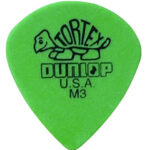While both classical and acoustic guitars might appear similar at first glance – sharing features like six strings, a soundhole, and tuning pegs – their differences are significant and impact both sound and playability. Understanding these distinctions is crucial, especially when you’re considering learning to play or purchasing a guitar. Let’s delve into the fundamental differences between classical and acoustic guitars.
Shape and Body Style
Acoustic guitars are commonly found in the dreadnought shape, a popular body style known for its robust sound and volume. Parlor-size guitars, smaller than dreadnoughts, are another acoustic option. While parlor guitars are generally smaller than classical guitars, the overall size range of acoustic guitars can vary depending on the manufacturer and specific type.
Classical guitars, on the other hand, have a more standardized body shape, often slightly smaller than a dreadnought acoustic but with a wider lower bout (the widest part of the guitar body). This shape contributes to the classical guitar’s characteristic warm and resonant tone.
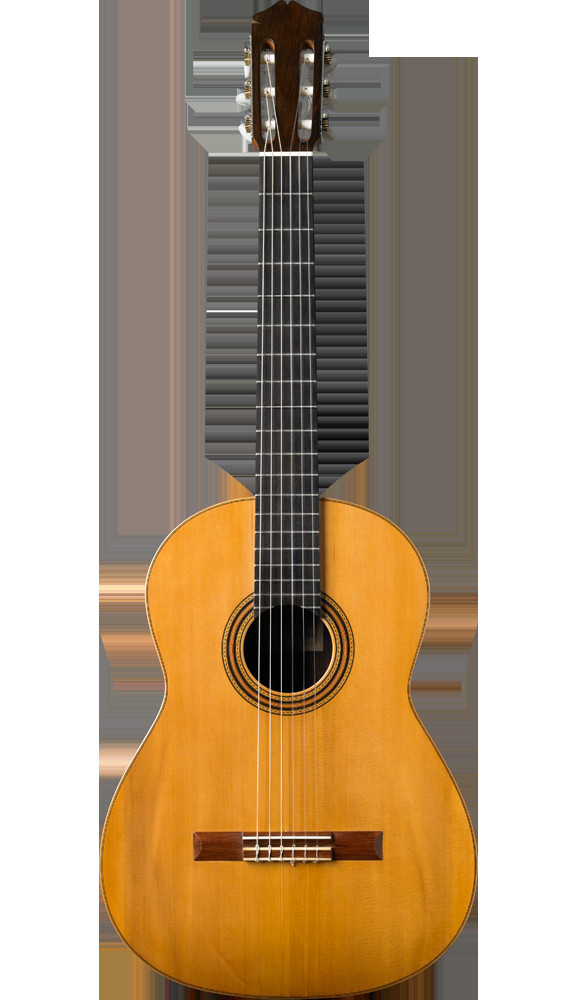 Classical guitar on the left with nylon strings and wider neck compared to acoustic guitar on the right with steel strings and narrower neck showcasing shape difference
Classical guitar on the left with nylon strings and wider neck compared to acoustic guitar on the right with steel strings and narrower neck showcasing shape difference
Neck Dimensions and Playability
The neck width is a significant difference between classical and acoustic guitars. Classical guitars typically feature a wider neck compared to acoustic guitars. This wider neck is designed to accommodate fingerstyle playing, a technique commonly used in classical and flamenco music, providing ample space between strings for intricate finger movements.
Acoustic guitars, designed for both strumming and fingerpicking, generally have narrower necks and tighter string spacing. This design facilitates chord strumming and faster transitions along the fretboard, preferred styles in many genres like folk, rock, and country. It’s also worth noting that classical guitars often lack fret markers on the fretboard itself, which might present a learning curve for some players initially.
Bridge Design and String Attachment
The bridge, which anchors the strings to the guitar body, also differs significantly between classical and acoustic guitars. Classical guitars utilize a tie-on bridge, where the nylon strings are tied directly to the bridge. This method is reminiscent of stringing a ukulele and is essential for nylon strings. While traditionally tie-on, some modern classical guitars also accommodate ball-end nylon strings for easier string changes.
Acoustic guitars employ a bridge with bridge pins. These pins securely hold the steel strings in place, passing through the bridge and anchoring against the bridge plate inside the guitar body. This system is designed to withstand the higher tension of steel strings.
Strings: Nylon vs. Steel and Sound Characteristics
The most crucial distinction between classical and acoustic guitars lies in the strings they use: nylon for classical and steel for acoustic. This difference in string material is the primary contributor to their distinct sounds.
Classical guitars use nylon strings, which are thicker and produce a mellow, warm, and softer sound. The treble strings (G, B, high E) are made of solid nylon, while the bass strings (E, A, D) consist of a nylon multifilament core wrapped with silver-plated copper. Nylon strings are gentler on the fingertips, making them often recommended for beginners due to reduced finger pain in the initial learning stages. The sound produced by nylon strings is particularly well-suited for classical, flamenco, and Spanish guitar music.
Acoustic guitars, on the other hand, use steel strings. Steel strings create a bright, resonant, and louder sound with more sustain and projection compared to nylon strings. Acoustic guitar strings are available in various metals and alloys, including bronze, phosphor bronze, and nickel, each offering subtle tonal variations. Steel strings are thinner and have a higher tension, which can be initially tougher on uncalloused fingers but contribute to the bright and powerful sound characteristic of acoustic guitars used in genres like rock, folk, blues, and country.
String Types for Classical and Acoustic Guitars
Classical Guitar Strings
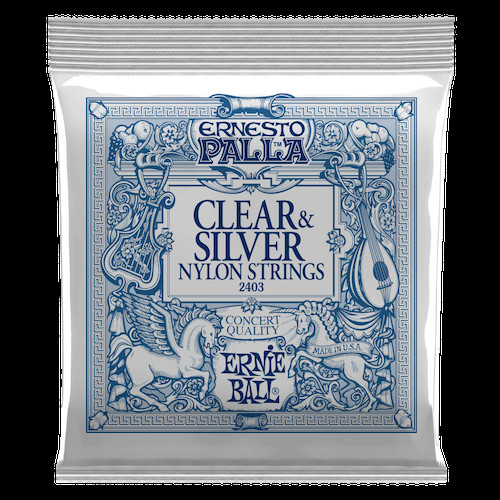 Ernesto Palla Clear and Silver Nylon Classical Guitar Strings packaging
Ernesto Palla Clear and Silver Nylon Classical Guitar Strings packaging
Ernesto Palla Clear & Silver Nylon Classical Guitar Strings
These popular concert-quality classical guitar strings are known for their smooth, rich tone, excellent clarity, and reliable performance.
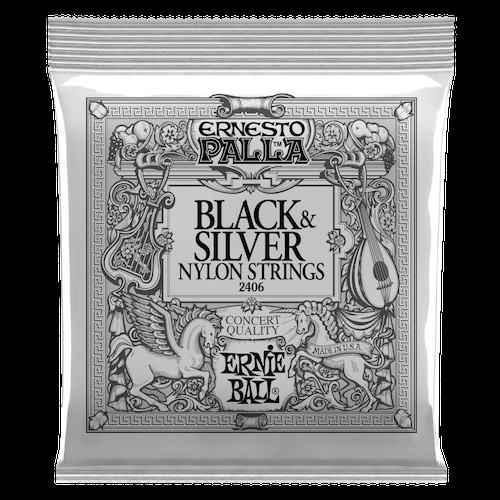 Ernesto Palla Black and Silver Nylon Classical Guitar Strings packaging
Ernesto Palla Black and Silver Nylon Classical Guitar Strings packaging
Ernesto Palla Black & Silver Nylon Classical Guitar Strings
Crafted from a different nylon composition, black nylon strings offer a warmer, purer sound with enhanced treble overtones, favored by folk guitarists.
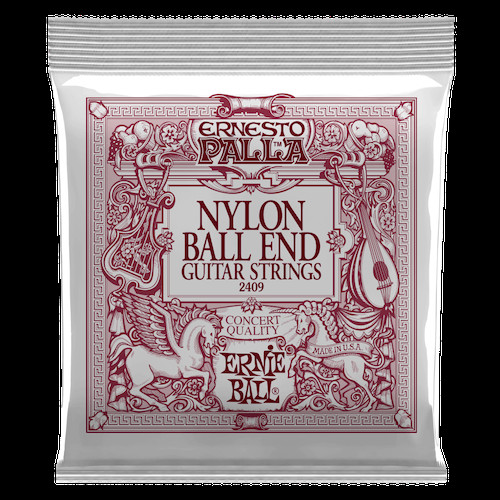 Ernesto Palla Black and Gold Ball-End Nylon Classical Guitar Strings packaging
Ernesto Palla Black and Gold Ball-End Nylon Classical Guitar Strings packaging
Ernesto Palla Black & Gold Ball-End Nylon Classical Guitar Strings
Featuring gold wound basses made of 80/20 bronze wrapped around a nylon core, these strings provide a smooth, rich tone and ball-ends for easier installation.
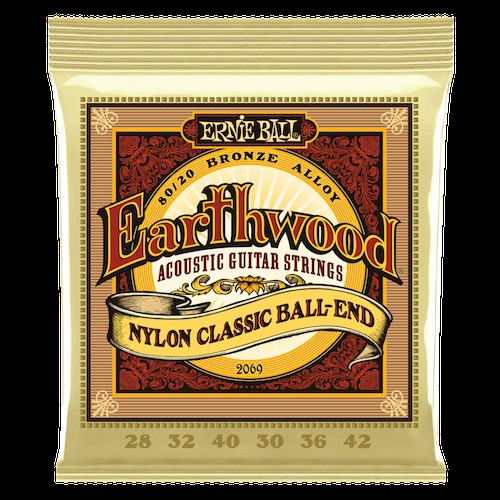 Earthwood Folk Nylon Clear and Gold Ball End 80/20 Bronze Acoustic Guitar Strings packaging
Earthwood Folk Nylon Clear and Gold Ball End 80/20 Bronze Acoustic Guitar Strings packaging
Earthwood Folk Nylon, Clear & Gold Ball End, 80/20 Bronze Acoustic Guitar Strings
Ernie Ball Folk Nylon acoustic guitar plain strings are made of solid nylon for rich treble tones. The wound strings utilize 80/20 bronze wrapped around a nylon core.
Acoustic Guitar Strings
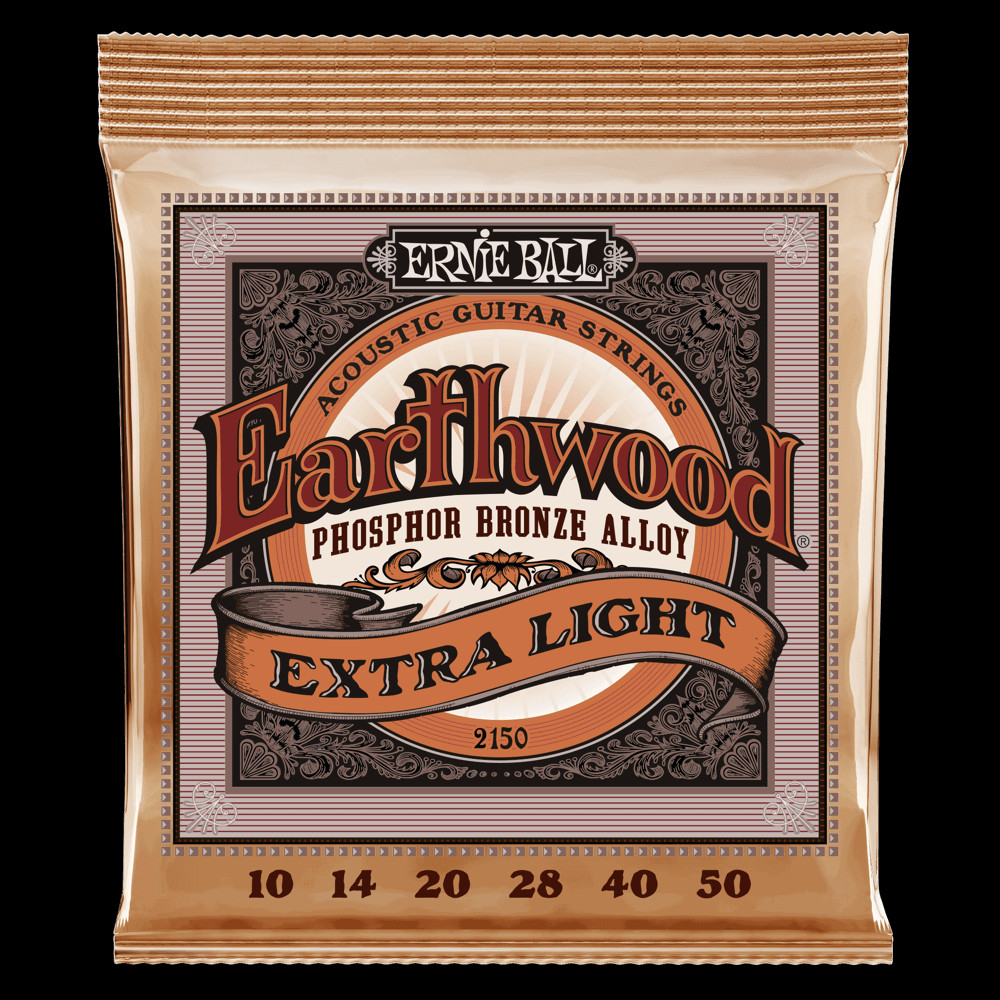 Earthwood Acoustic Guitar Strings packaging
Earthwood Acoustic Guitar Strings packaging
Earthwood Acoustic Guitar Strings
Available in Phosphor Bronze for a mellow, ringing sound and 80/20 Bronze for crisp, pleasing overtones, Earthwood acoustic strings cater to diverse tonal preferences.
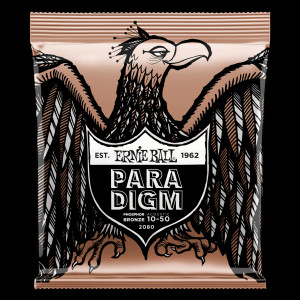 Paradigm Acoustic Guitar Strings packaging
Paradigm Acoustic Guitar Strings packaging
Paradigm Acoustic Guitar Strings
Paradigm acoustic strings offer exceptional strength and extended lifespan while maintaining the authentic Earthwood tone and feel, available in 80/20 and Phosphor Bronze.
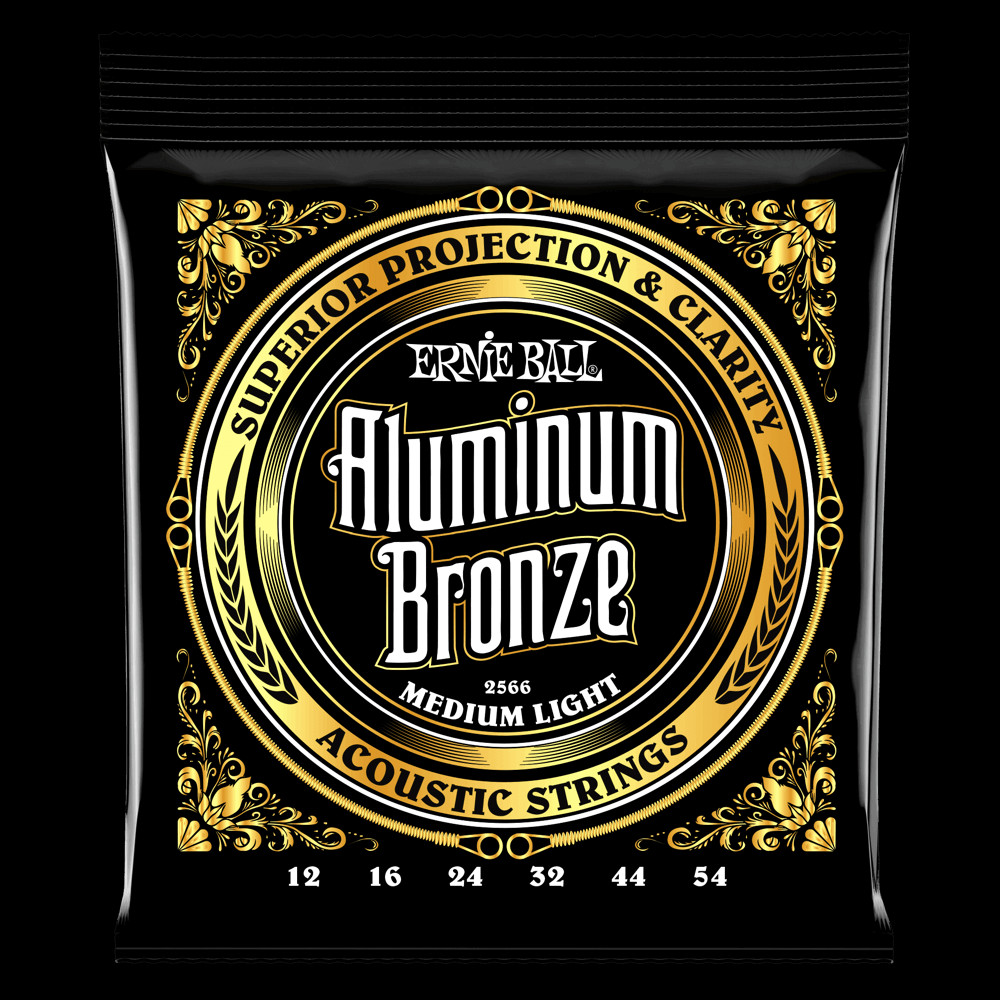 Aluminum Bronze Acoustic Guitar Strings packaging
Aluminum Bronze Acoustic Guitar Strings packaging
Aluminum Bronze Acoustic Guitar Strings
Aluminum Bronze acoustic strings provide enhanced projection and clarity compared to traditional bronze strings, with improved corrosion resistance and pronounced lows and brilliant highs.
 Everlast Coated Acoustic Strings packaging
Everlast Coated Acoustic Strings packaging
Everlast Coated Acoustic Strings
Everlast Coated acoustic guitar strings utilize nanotechnology to repel moisture and oils, preserving tone and extending string life, available in 80/20 and Phosphor Bronze.
Choosing between a classical and an acoustic guitar depends largely on your musical preferences and playing style. If you are drawn to classical, flamenco, or nylon-string guitar music, a classical guitar is the clear choice. For those interested in genres like rock, folk, blues, country, and pop, an acoustic guitar with steel strings is generally more suitable. Ultimately, experiencing both types of guitars is the best way to discover which one resonates with you and aligns with your musical journey.
To hear classical guitar strings in action, check out Steve Morse playing Ernie Ball Ernesto Palla Clear & Silver Nylon Classical Guitar Strings.

